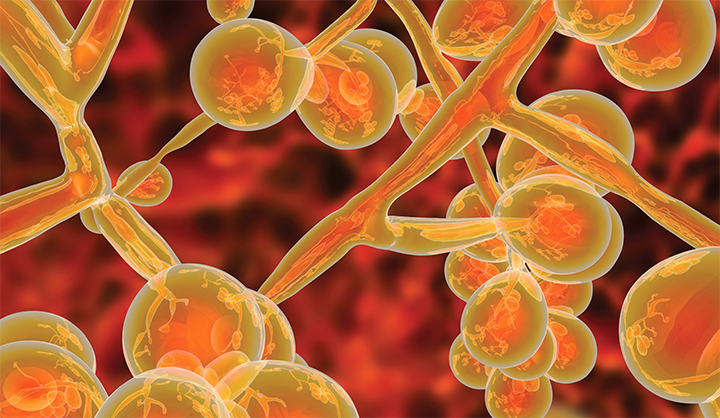Pan-Resistant C. auris Surfaces in New York
Patients A and B were both older than 50, suffered from multiple comorbidities, and were residents of long-term care facilities. Both died.

The largest concentration of Candida auris cases in the country is in New York; that’s 427 of 911 confirmed cases as of October 31, 2019. It is perhaps no surprise then that 3 cases of pan-resistant C. auris arose in New York, and investigators with the New York State Department of Health wanted to find out what happened. As they relate in the CDC’s Morbidity and Mortality Weekly Report, pan-resistant C. auris can defy all three classes of antifungal drugs used to treat the infection.
“Approximately 3 years into the New York outbreak, these pan-resistant isolates still appear to be rare, but their emergence is concerning,” the investigators note. (A spokesperson with the New York State Department of Health told Infection Control Today that "C. auris cases in New York are primarily concentrated among hospital patients and nursing home residents in New York City.")
Patients A and B were both older than 50, suffered from multiple comorbidities, and were residents of long-term care facilities. Patient A became infected in 2017; Patient B in 2018.
“Both patients died; the role of C. auris in their deaths is unclear,” the study states.
Perhaps, but the investigators took a long look at each case, as well as the case of Patient C, who contracted the infection in 2017 and who died from underlying medical conditions, according to the study.
“Neither patient [A or B] was known to have received antifungal medications before the diagnosis of C. auris infection, but both patients were treated with prolonged courses of echinocandins after C. auris was identified,” the study states. “Patient A was also treated with amphotericin B. Cultures taken after echinocandin therapy from both patients yielded C. auris isolates resistant to fluconazole, amphotericin B, and echinocandins.”
The 3 facilities that cared for Patients A and B were assessed to see if the infection might have spread, but no C. auris was found on anybody the patients interacted with or on surfaces.
Patient C, also resistant to the 3 classes of antifungals, was admitted to a “long-term care facility (different from the facilities that cared for Patients A and B) on contact precautions. Subsequent serial surveillance cultures from several body sites were obtained, and all remained negative…” for more than 6 months, the study states.
The investigators concluded that “because of the potential for development of resistance, patients on antifungal treatment for C. auris should be monitored closely for clinical improvement, and follow-up cultures should be obtained. Repeat susceptibility testing should also be conducted, especially in patients previously treated with echinocandins. Consultation with an infectious disease specialist is recommended, especially given the possibility of emergence of pan-resistance.”
Beyond the Surface: Rethinking Environmental Hygiene Validation at Exchange25
June 30th 2025Environmental hygiene is about more than just shiny surfaces. At Exchange25, infection prevention experts urged the field to look deeper, rethink blame, and validate cleaning efforts across the entire care environment, not just EVS tasks.
Getting Down and Dirty With PPE: Presentations at HSPA by Jill Holdsworth and Katie Belski
June 26th 2025In the heart of the hospital, decontamination technicians tackle one of health care’s dirtiest—and most vital—jobs. At HSPA 2025, 6 packed workshops led by experts Jill Holdsworth and Katie Belski spotlighted the crucial, often-overlooked art of PPE removal. The message was clear: proper doffing saves lives, starting with your own.